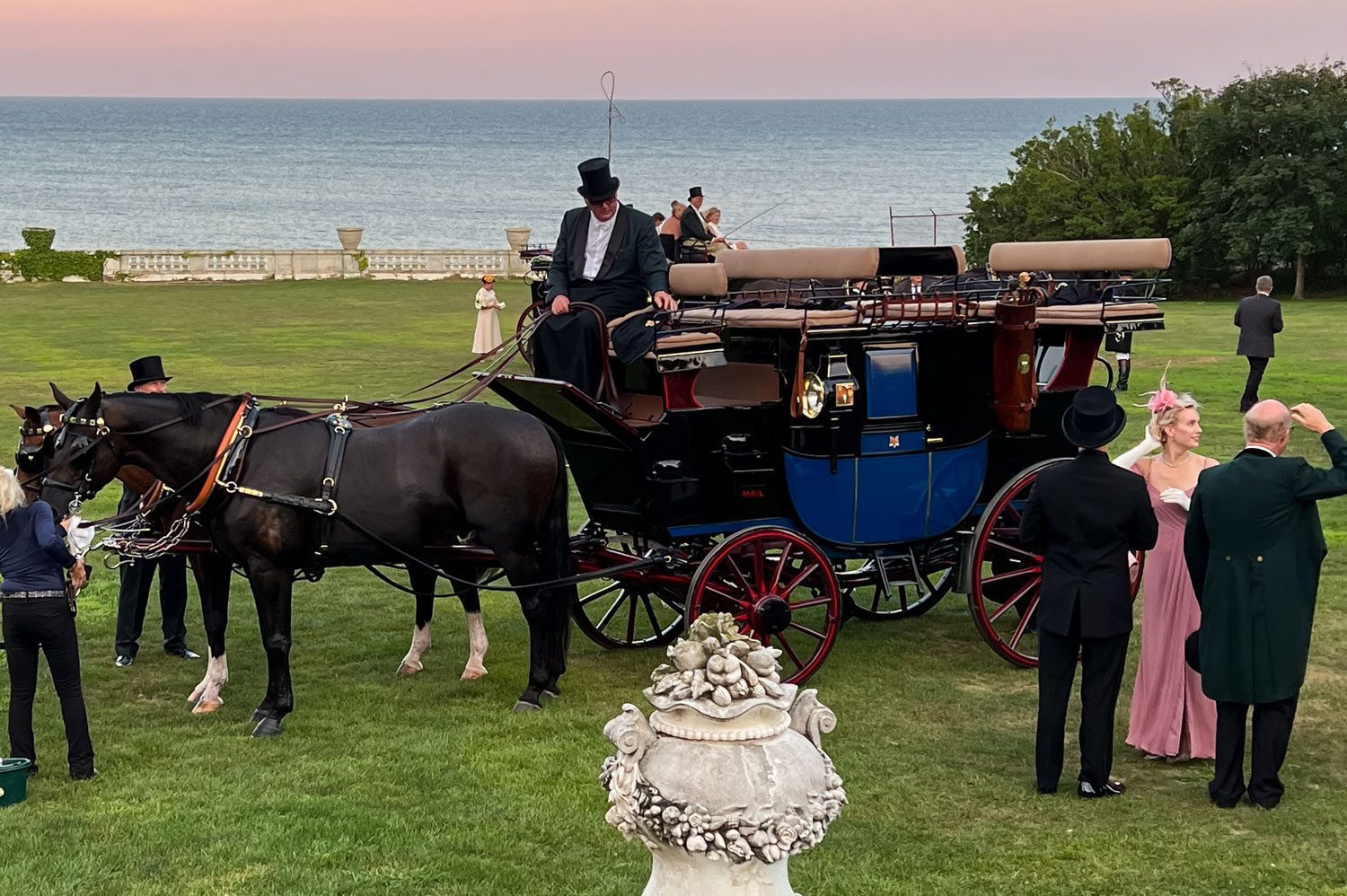
As though scripted by Julian Fellowes, Coaching Weekend returned to Newport August 18-21 after a four year hiatus, just as the first season of his “The Gilded Age” TV series ended. Coaching, an English tradition, was brought to Newport by Alfred Gwynne Vanderbilt in the 1880’s, the beginning of this period in America. One of the evening events was next door to Parterre, at Rosecliff, where the coaches delivered their guests to the back lawn as a pink sky shown down upon the water (feature image above)…and a member of the Vanderbilt family and his wife enjoyed a sip of champagne before ascending the steps to dinner in Rosecliff’s ballroom.
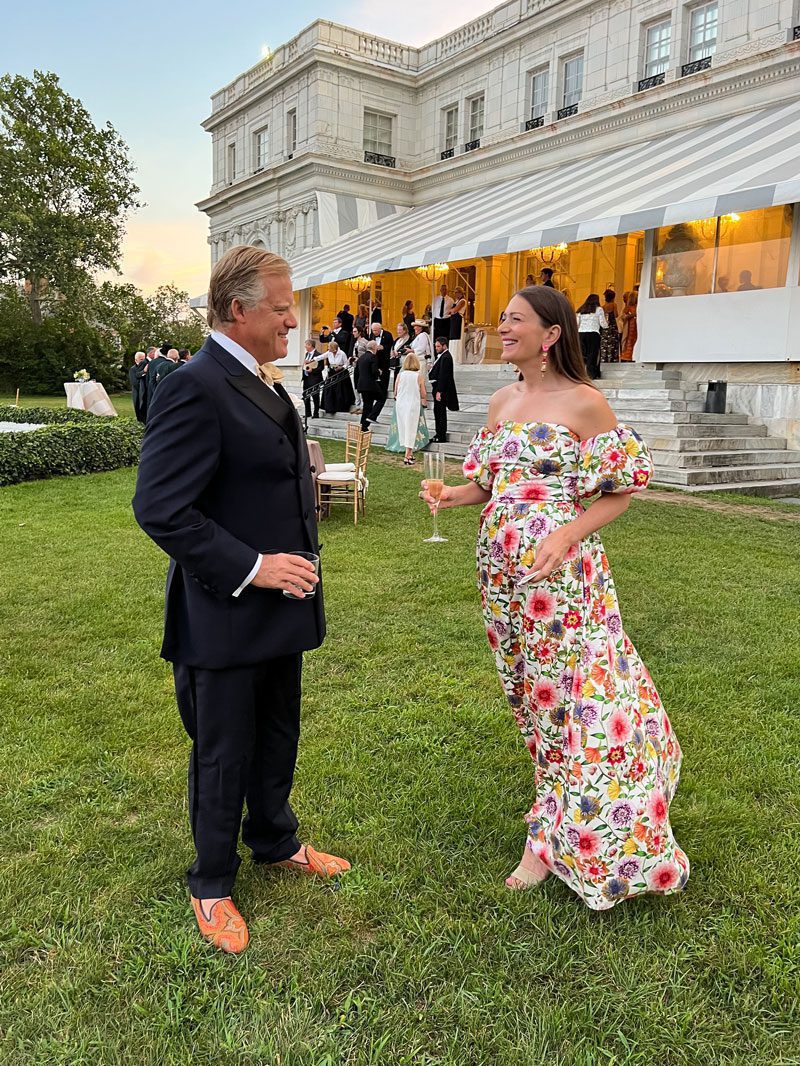
With a nod to Julian Fellowes, join me as I look back on one of my favorite Coaching Weekend blogs (2015), “Downton Abbey comes to Newport.”
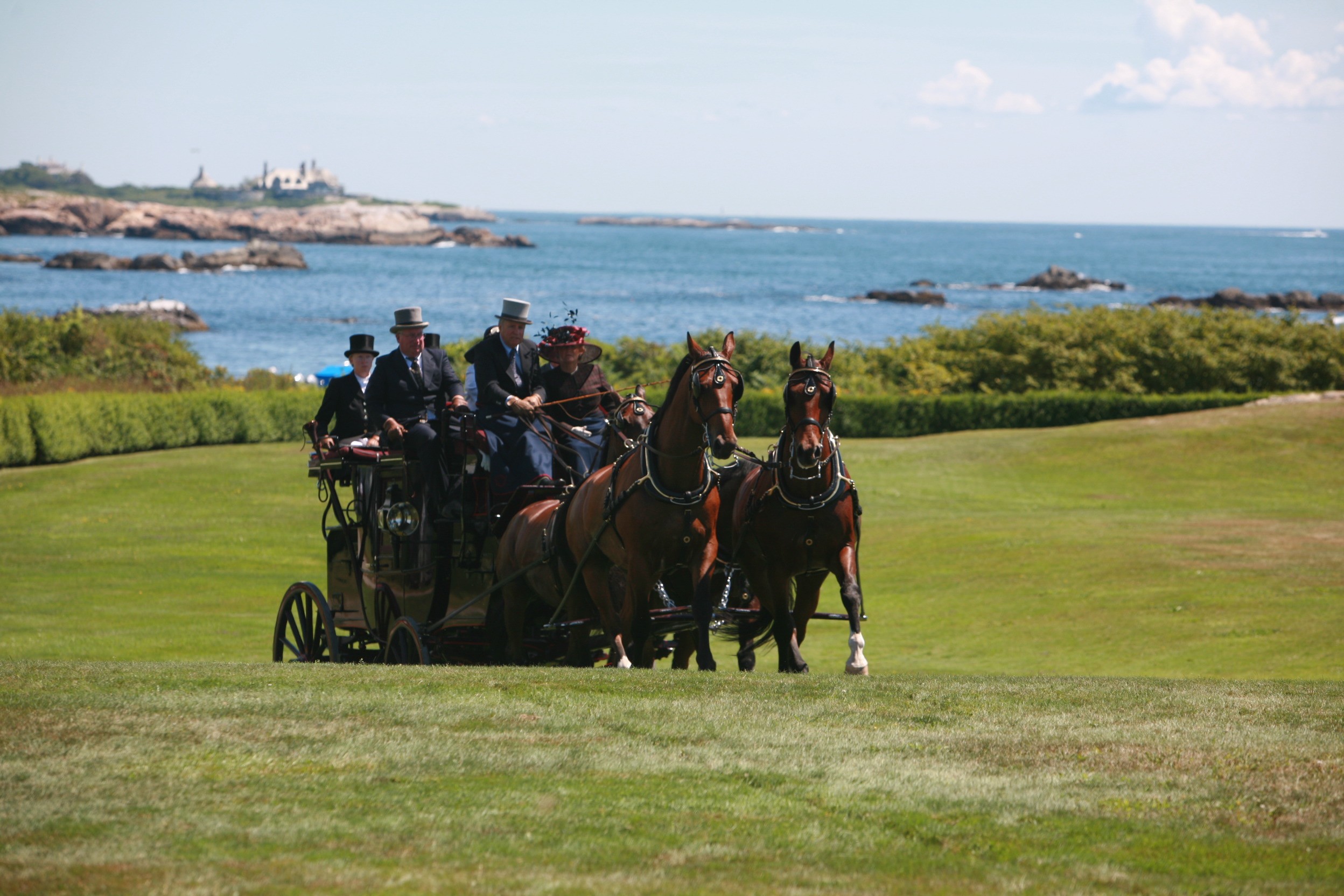
Calling on Good Friends
“You always wear the tilt of a hat on the right side of your head, since we customarily kiss on the left cheek. Such an English custom,” the obliging milliner at Philip Treacy, in London, reminds me.

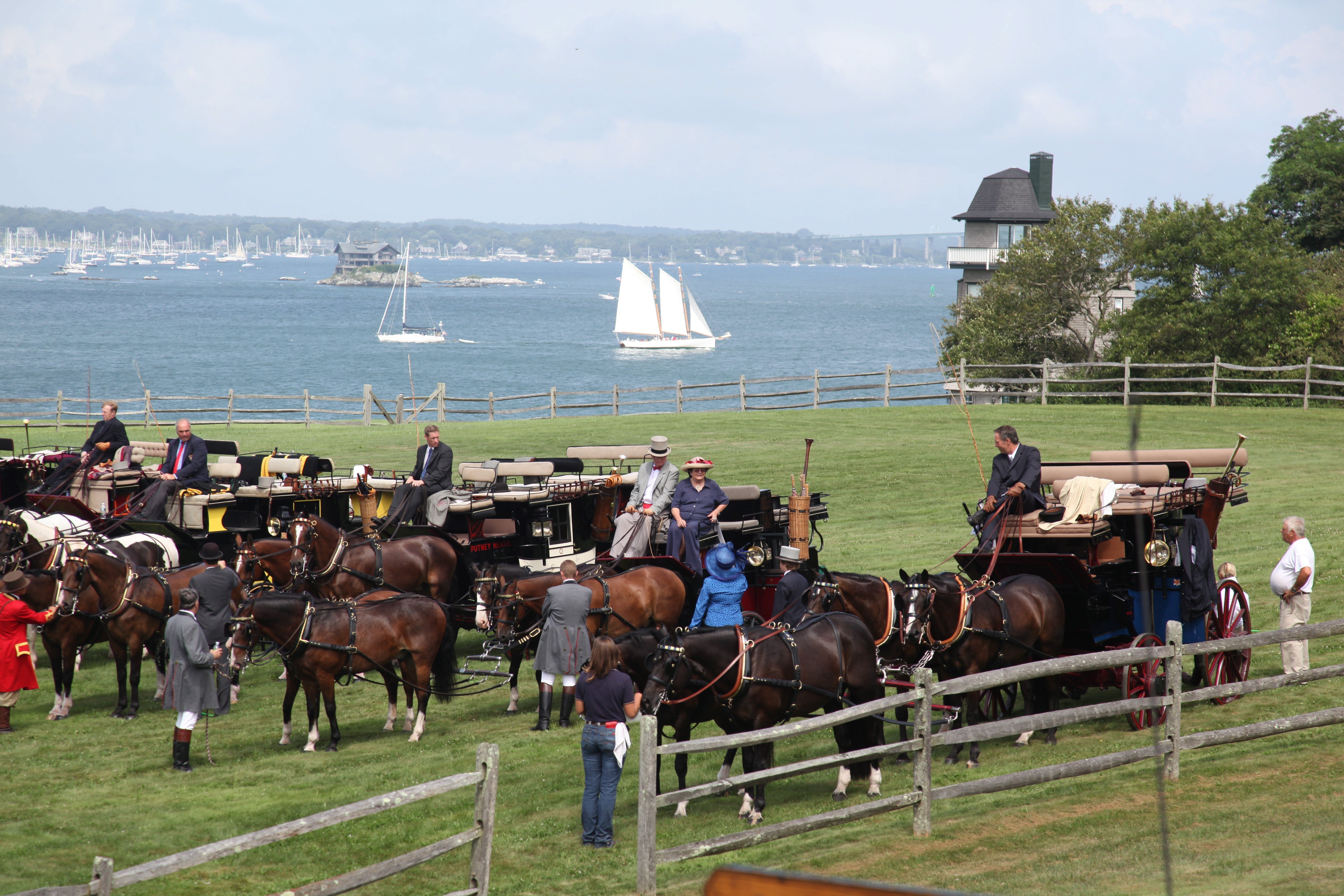
Preparations for Coaching (including acquiring the requisite hat) are worthy of a Masterpiece Theater presentation. A breathtaking panoply played out against the sparkling blue ocean, sweeping emerald green lawns and stunning architecture recalling a bygone era, Coaching is a study in elegant details. The handsome antique coaches are in impeccable condition, the horses (referred to as “four-in-hand”) are matched pairs, the Whips (owners and drivers) are always in appropriate attire, including top hat, and the liveried footmen sport colorful costume. Like any presentation, what goes on behind the scenes in the homes of many Newporters is every bit as well considered. Hosts and guests alike find themselves faced with myriad details — choices for attire and the de riguer hat, invitations and coach seating, not to mention juggling houseguests and party schedules.

As spectacular as the setting, the culture that distinguishes this Newport event is unlike the few others held in the United States. “We don’t parade, we visit,” explains Kenneth Lindh, a subtle distinction that differentiates promenading just for show and driving to specific destinations for social gatherings. “It’s all about entertaining and being entertained, in the true tradition of Newport. Private venues around the entire island, many on the water, punctuate each day’s eight- mile drive. The hospitality takes many forms — morning lemonade at Hammersmith Farm, overlooking the harbor; a luncheon out on Price’s Neck; a picnic up-island along the Sakonnet River at Greenvale Vineyards, with guests staying on their coach for the entire day. It helps that the host properties are large, making it possible to include 200 of your friends as well as the Coaching members.”

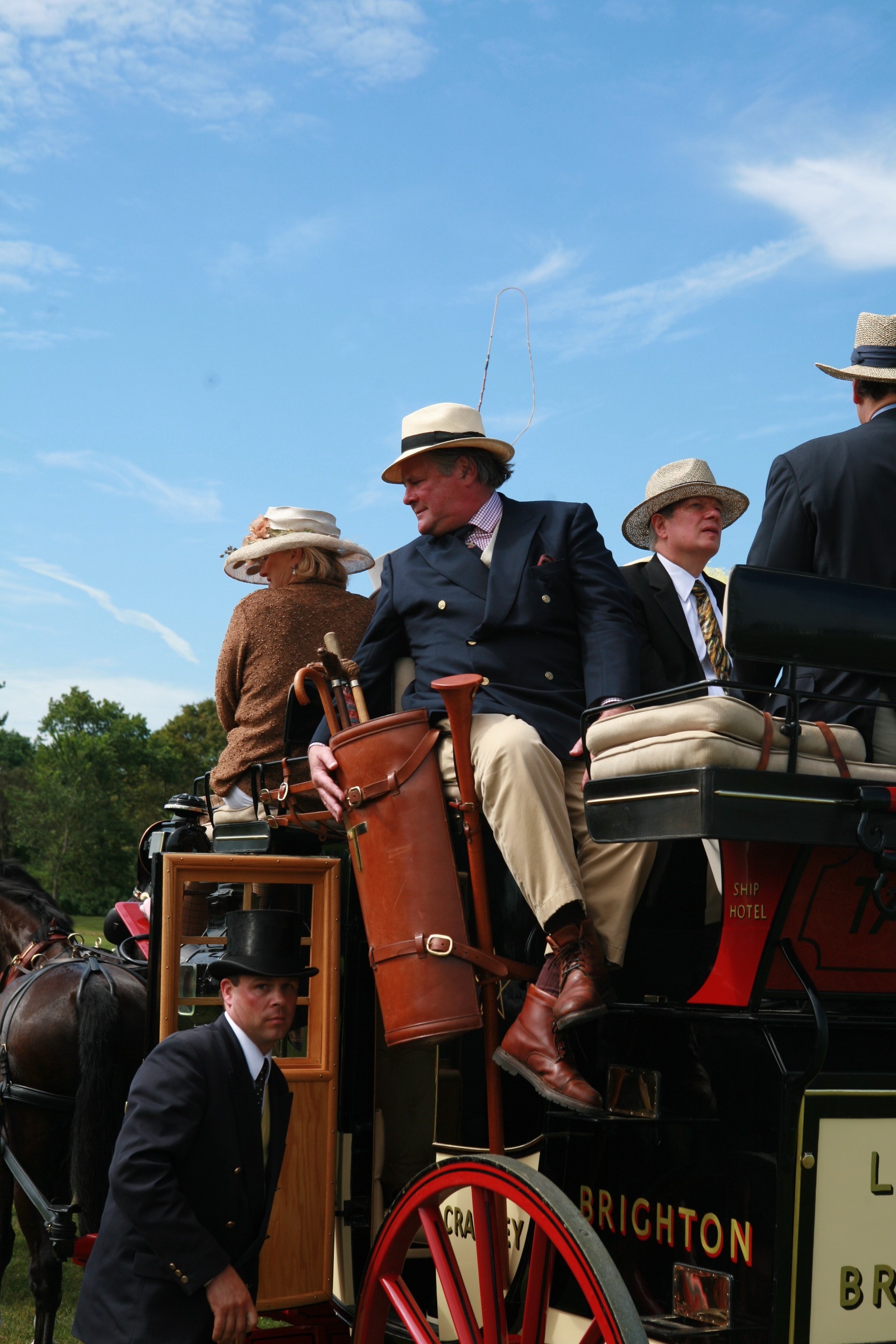
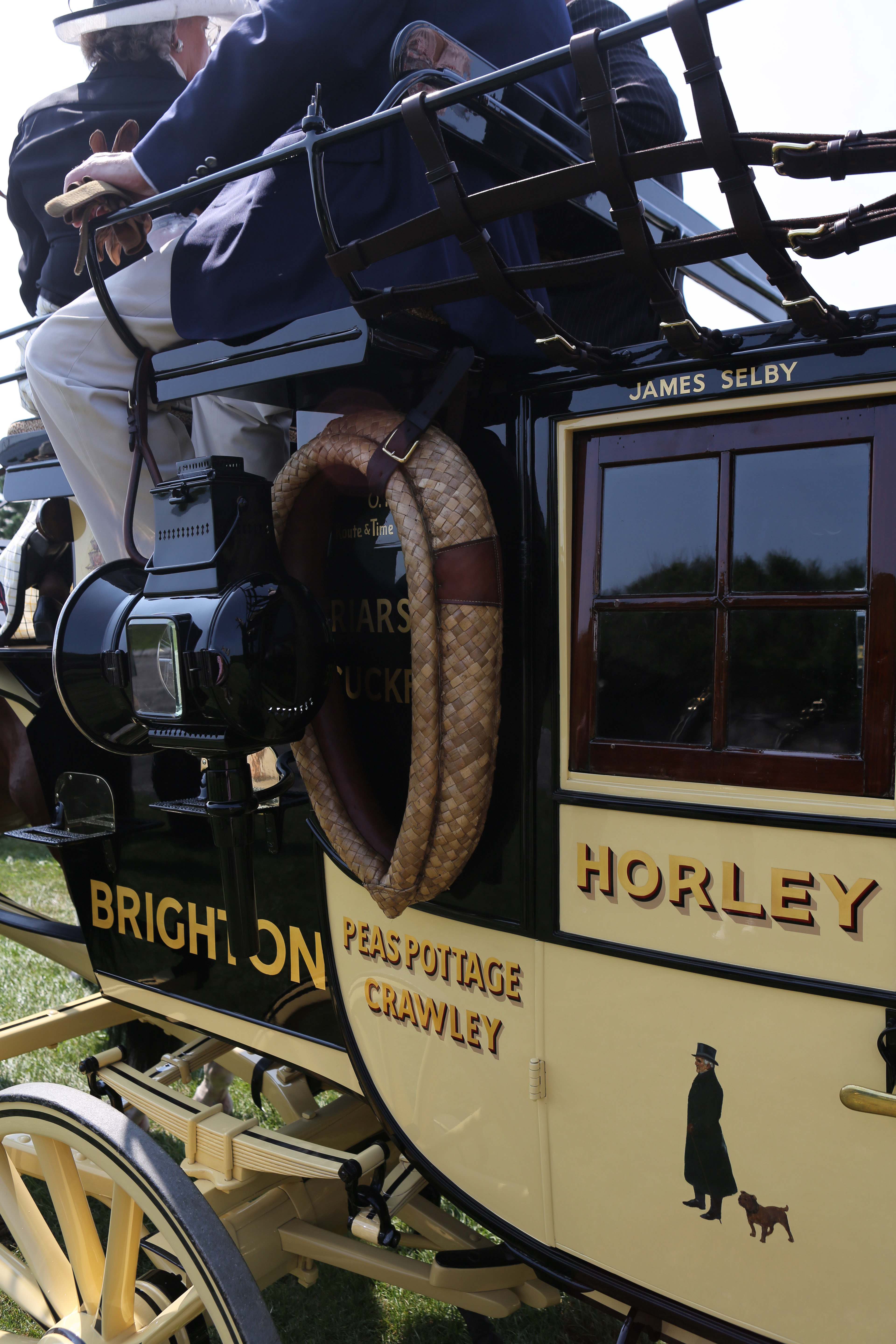
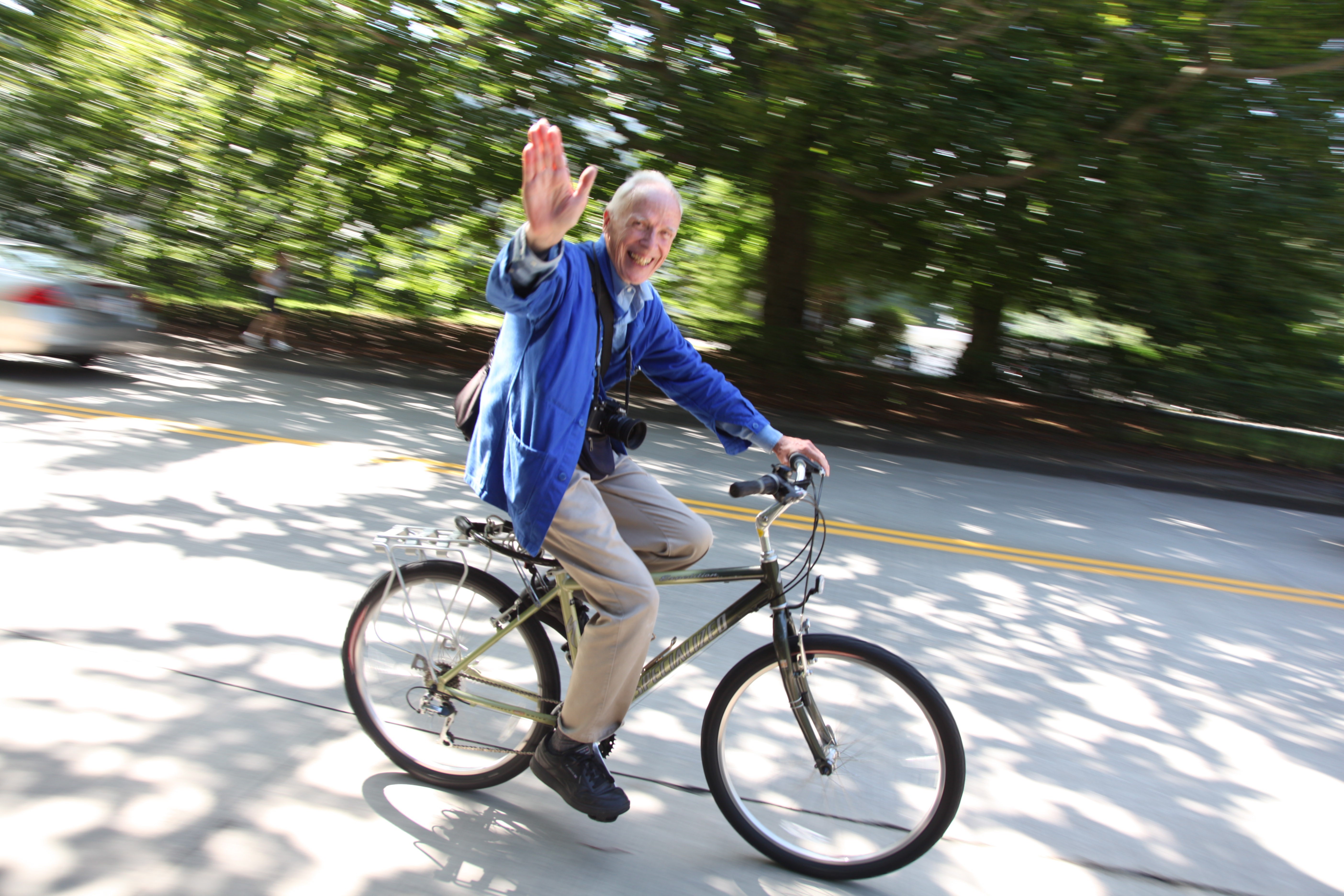
Two highlights of this early August weekend are a black tie dinner, always held in a private home, and the Coaching Ball dinner dance (for upwards of 600) at the Breakers, Cornelius Vanderbilt’s seventy-room “cottage” (a property of the Preservation Society of Newport County, which is also the recipient of funds raised.) Of course, these evenings and weekend always include Bill Cunningham, the stalwart social photographer, who is there to record the goings on for the Sunday Style section of the New York Times.
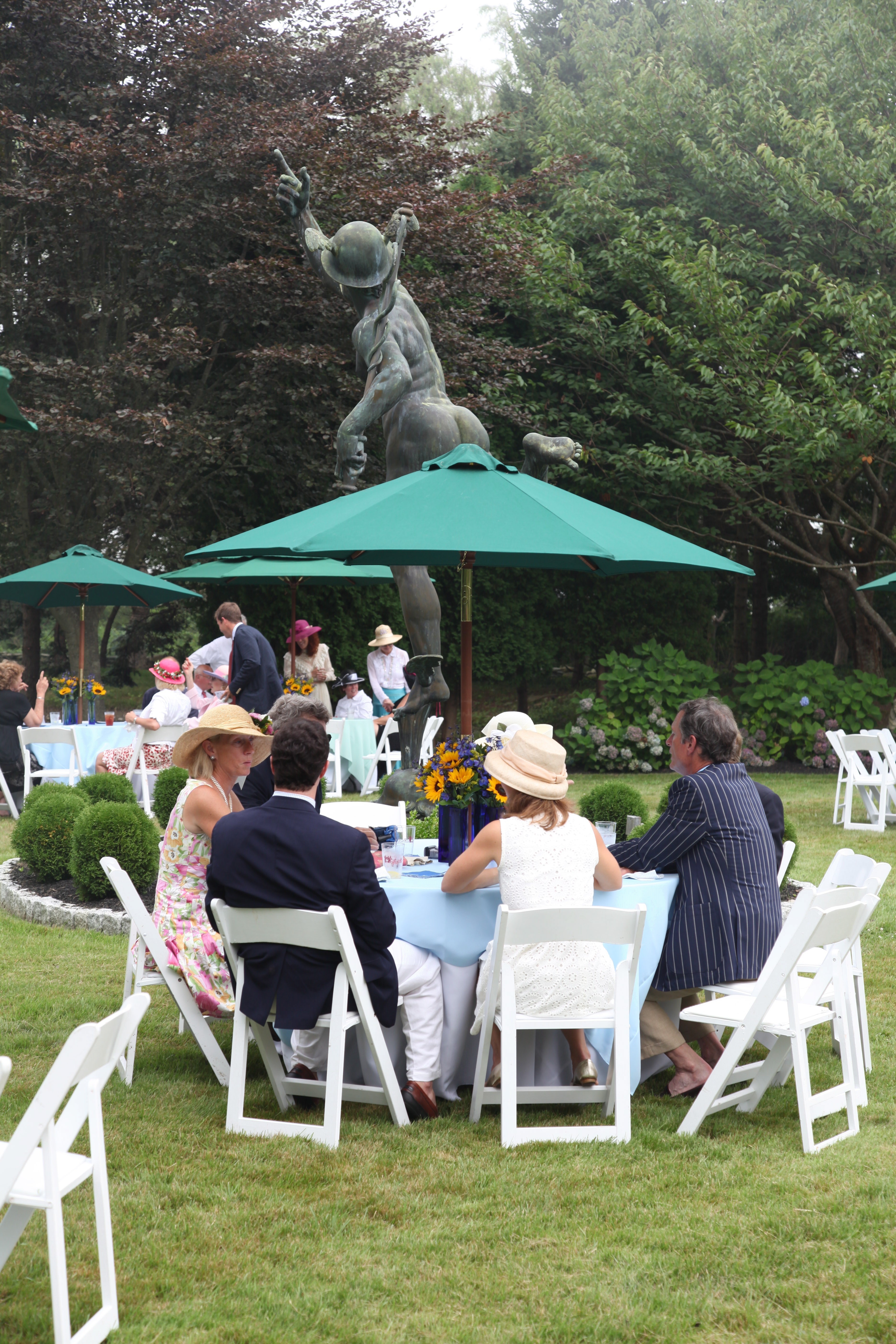
Living in Newport, with its many exceptional homes, gate houses, garden follies, stables and carriage houses, complemented by grand specimen trees on manicured landscapes, gives one the sense of existing in another place in time — and then the much-anticipated Coaching weekend comes along to keep that magical impression alive.
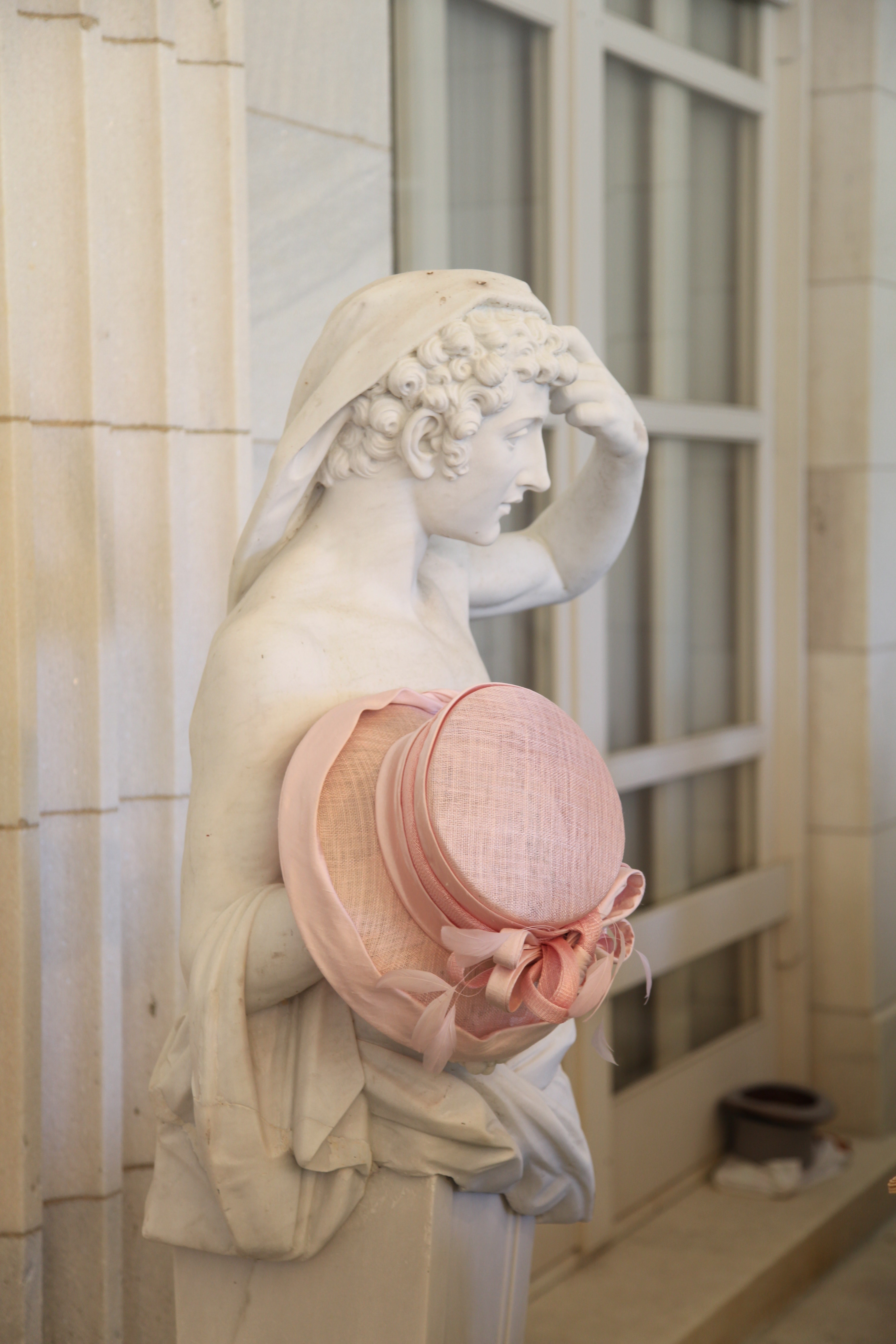
One can imagine how it was when Newport first played host to this lively event in the 1880s, when Alfred Gwynne Vanderbilt introduced Coaching to this country from England. It was he and several gentlemen of the time who founded The Coaching Club of New York (or The Coaching Club, as they preferred.) World War II interrupted the tradition but in 1968, Jack Seabrook, a Whip and member, with the help of David Lindh, picked up the mantle. This is certainly an appropriate role for David, a longtime Newport resident, who’d been involved in the 1940s and 1950s with the National Horse Show in New York City, precursor to the Coaching Club under whose auspices the Newport event is conducted. For twenty-five years David, as Chair, has been ably assisted by son Kenneth as Vice-Chair.
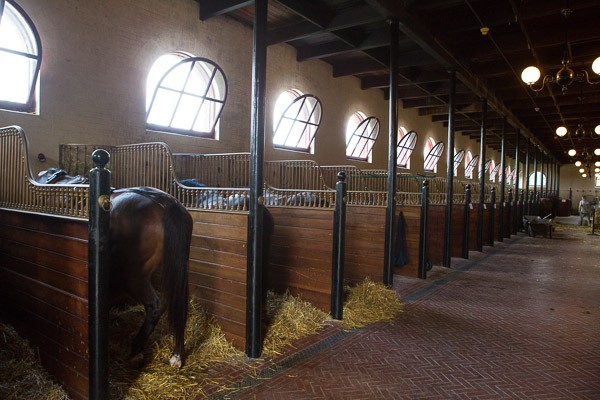
The weekend always comes off so seamlessly that no one would suspect the demands of this Herculean effort. In Kenneth’s words, “Inviting, assembling, securing venues, assigning lodging in private homes, organizing and staging the accommodations for the horses (all 60 of them!) as well as the coaches and grooms.” There is also protocol to consider that dictates the open-air seating for the two types of coaches used, the Road Coach and smaller Park Drag. The driver, or owner, known as a Whip, sits in the slightly elevated front right seat and the Whip’s wife or female relative takes up the “box seat” on the front left. The rear bench of the coach holds at least two specialized footmen, called grooms. On some coaches, the center benches can hold up to ten passengers.
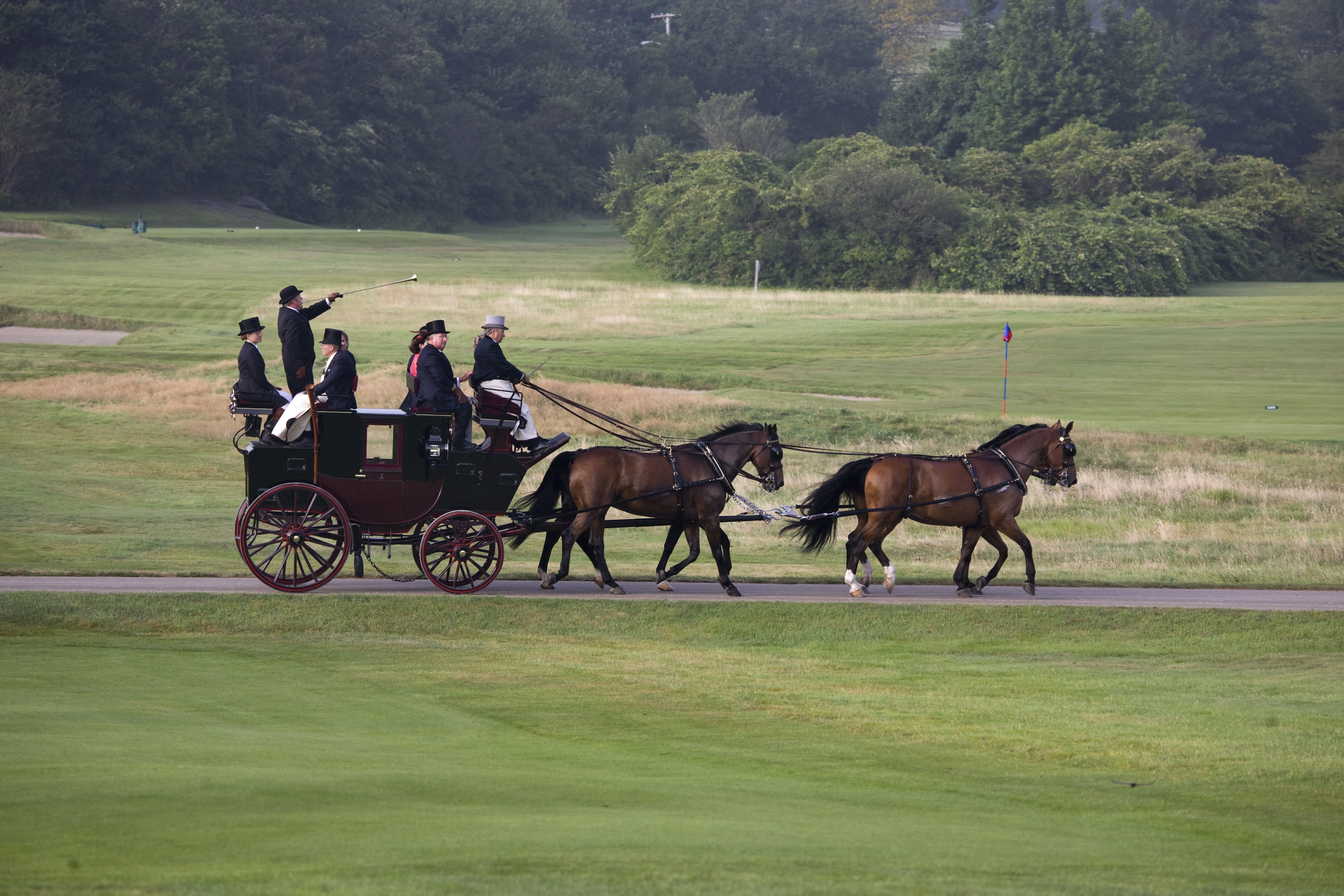
Kenneth provides an important note, “Driving, as it’s formally known, those eight miles over hill and dale, down country lanes and long, pebbled drives, along the Avenue, brushing the overhanging branches of the grand tress that complement the streetscapes, makes this weekend the Olympics of Coaching. The horses are exhausted, as are the Whips who must control those four-in-hand.”
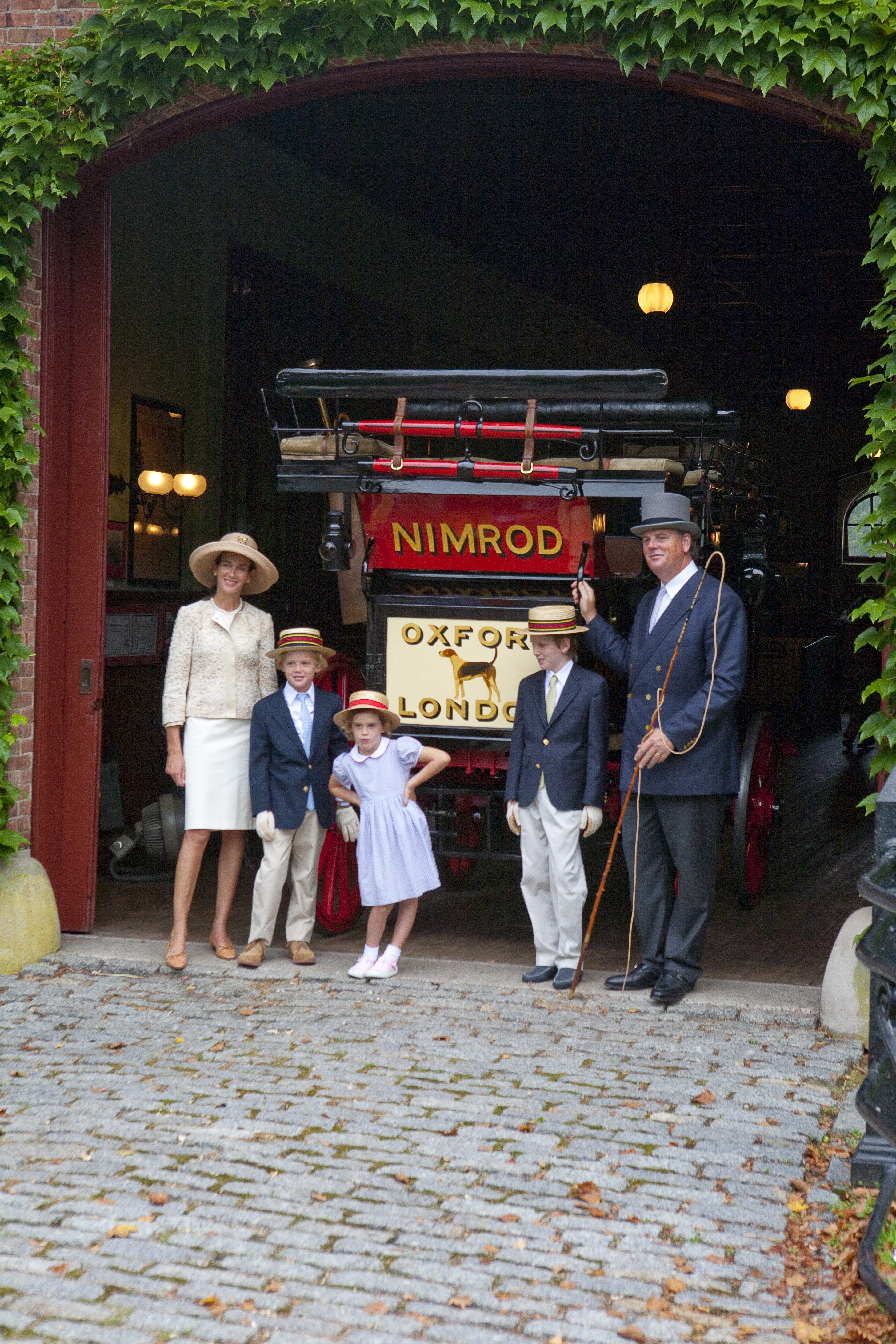
It is apparent, as a guest or a participant, that what makes Coaching in Newport such a singular experience, and a long-anticipated affair, is the personal aspect of the weekend that is designed for the entertainment of those attending. Each detail is well thought out, nothing is left to chance. As an example, it is a long-standing tradition that the coaches all gather at the Cushing estate, The Ledges, Friday evening specifically at sunset–or in Coaching parlance, “when they lose the light.” This year, as the lanterns were being lit, one driver was heard to say to his passengers “champagne is chilling in the boot, get out your flutes.”
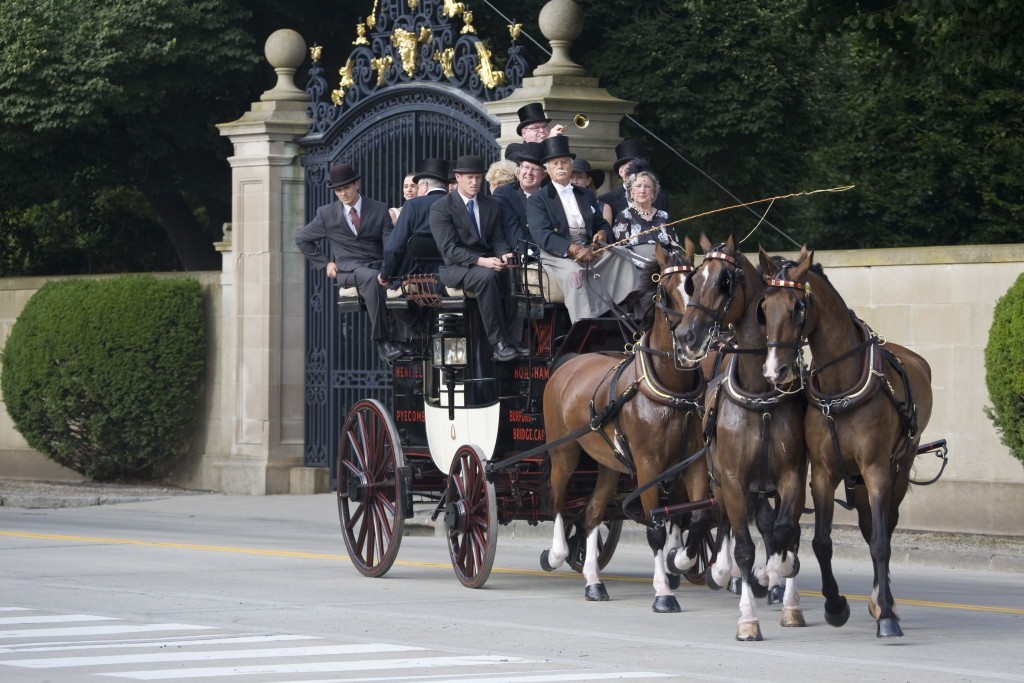
Then on to the Friday night black-tie dinner sponsored by The Coaching Club in honor of the Whips. It is at this dinner and the Saturday night dance where The Coaching Club uniform can truly be admired, a take on traditional white tie and tails. Protocol calls for a forest green tail coat, with black velvet lapels, buff colored waistcoat over starched white shirt and bow tie, worn over black pants. All a perfect foil for the ladies in black lace cocktail dresses, jewel-toned taffeta confections and sweeping ball gowns with trains. It is indeed a weekend of celebrating — a tradition, a sport, a social pastime.
Dinner is being served...
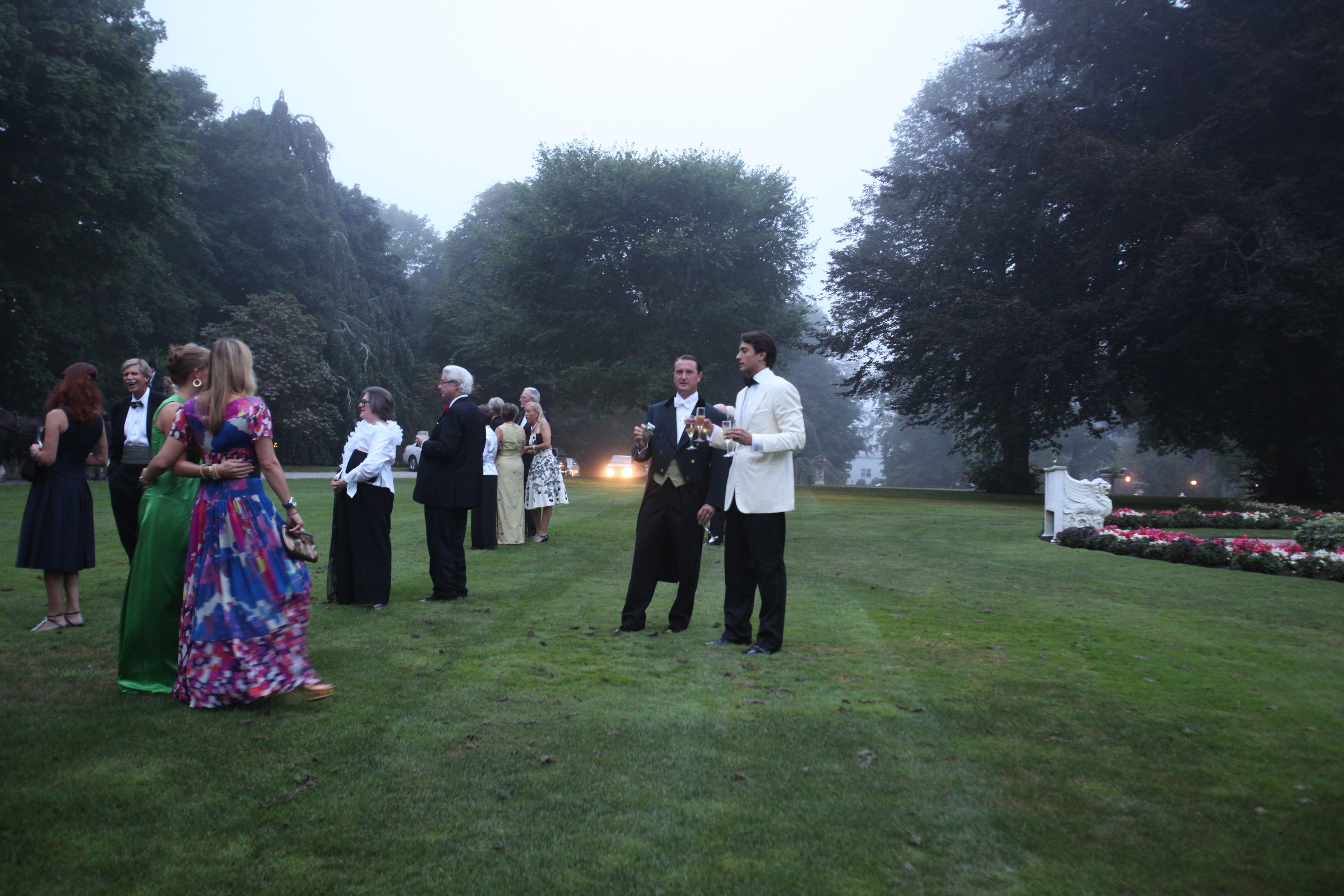
.
How many episodes do you think will be included in “The Gilded Age”series? Since most of the future episodes will be filmed in Newport, bets (and hopes) in town are that we will host at least 6.
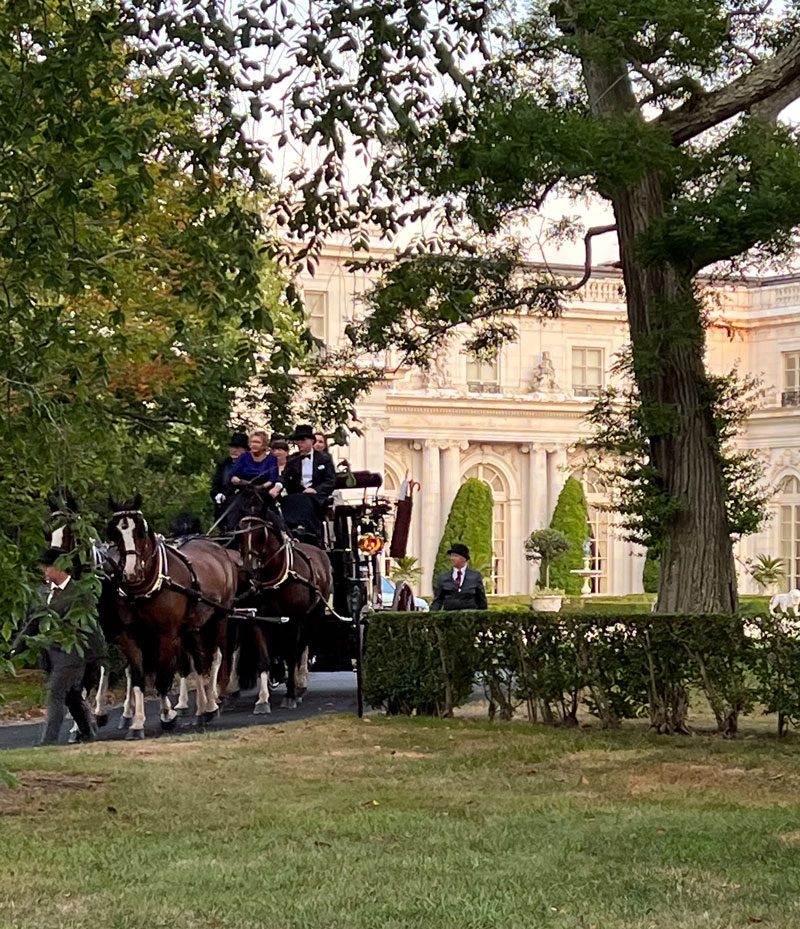






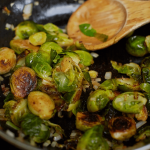


Lovely post!!
GREETINGS, 2 SEP 22
YOUR RECENT PHOTOS OF NEWPORT ONLY REMIND THIS 76 YEAR OLD OF MY
SUMMER OF 1966, WHEN I WAS: NINETEEN YEAR OLD ‘THOMAS’ – *HOUSEMAN -CUM – BUTLER IN TRAINING @ ‘FAIRHOLME’ FOR MRS. ROBERT R. YOUNG.
TRULY … A PICTURE ‘IS’ WORTH A THOUSAND WORDS!
I loved your blog about The Coaching Club. It is the most elegant of all sports. Here in Central Ky if is a part of our horse culture and there is nothing lovelier that watching the coaches and the Four-in-Hand drivers run across the beautiful Central Kentucky landscape.